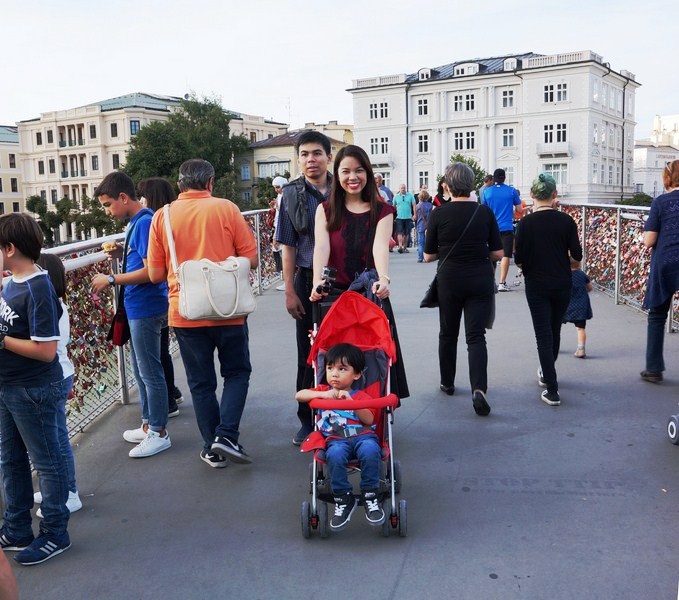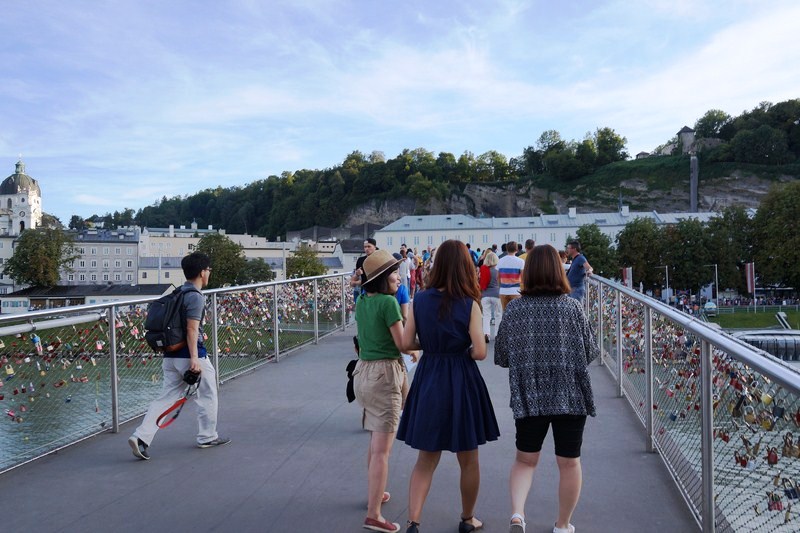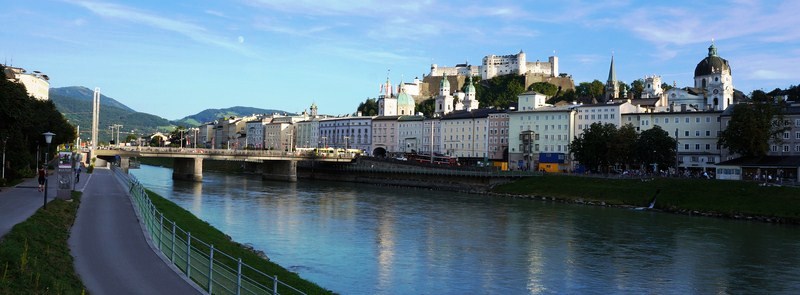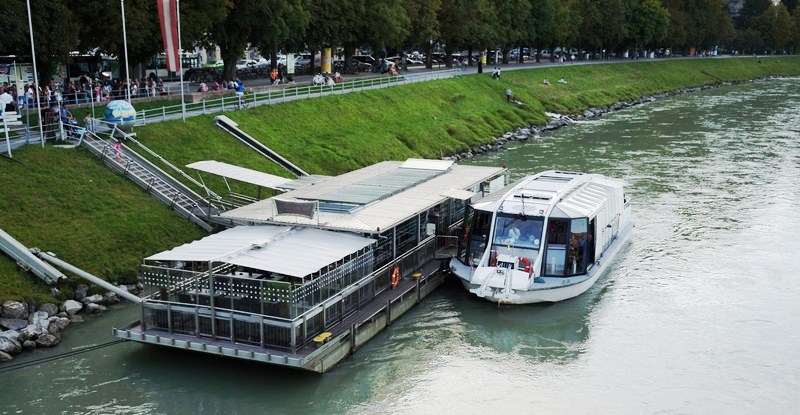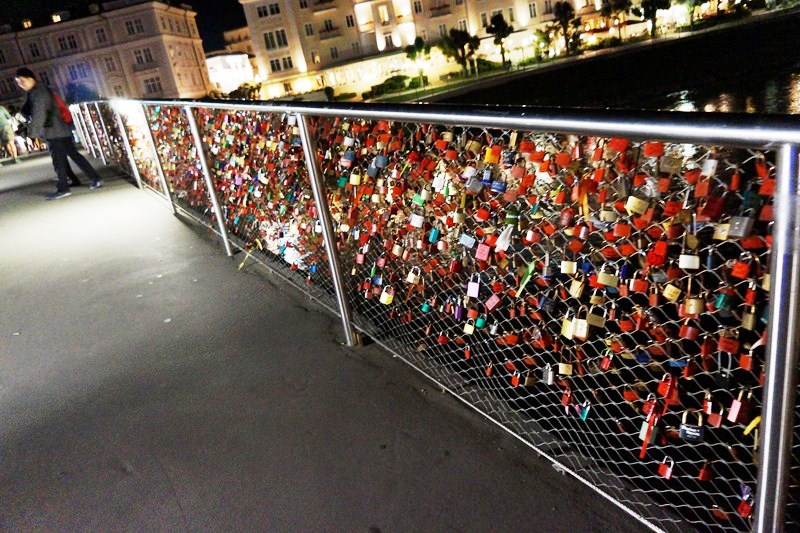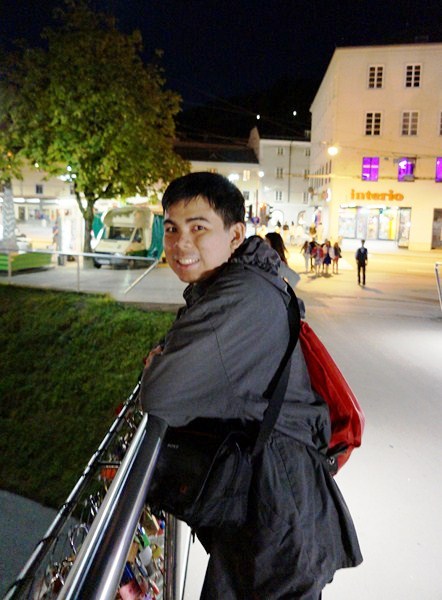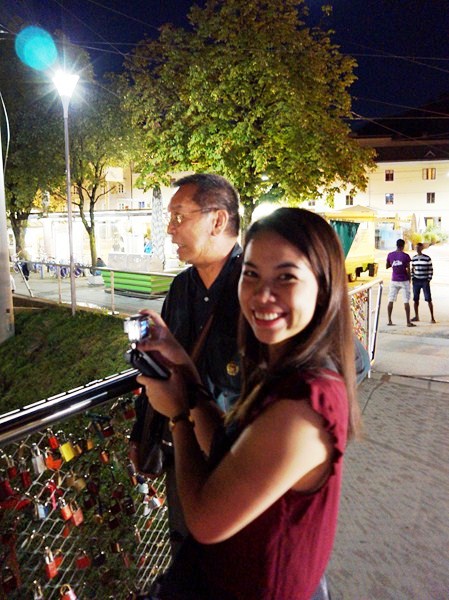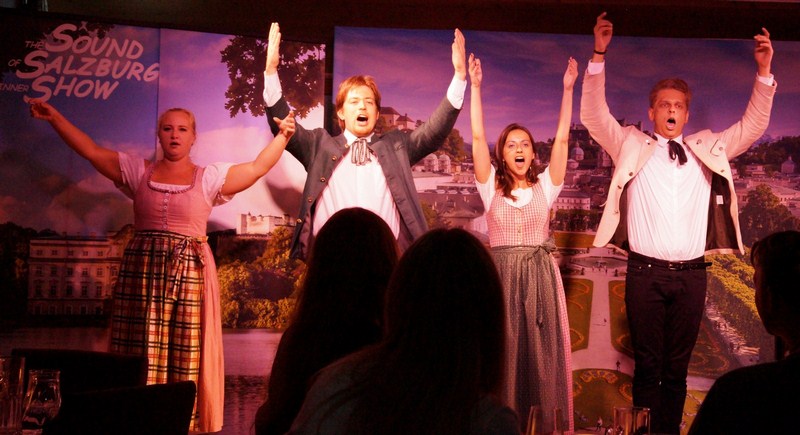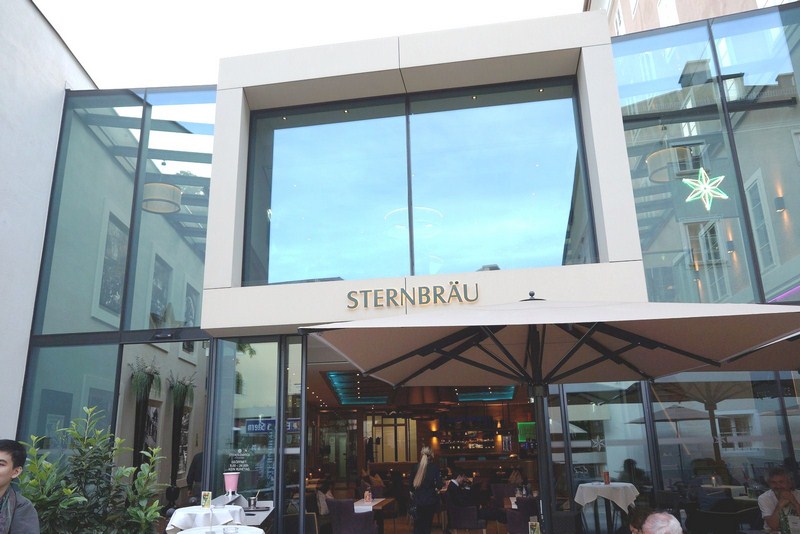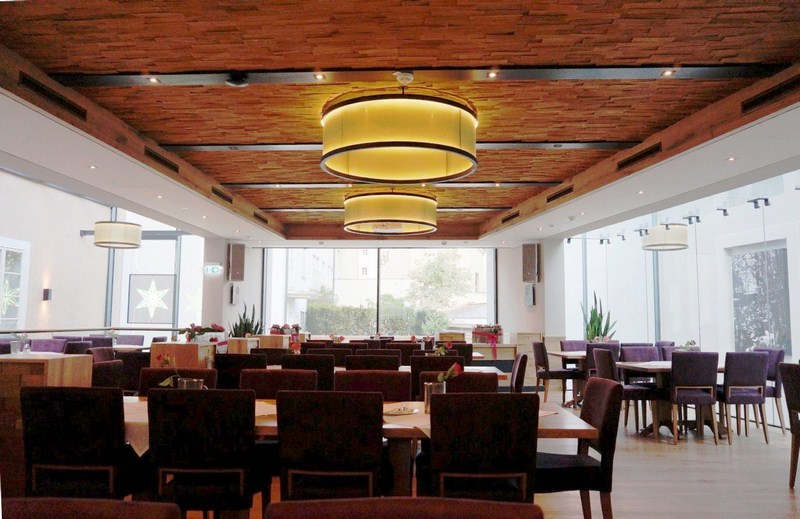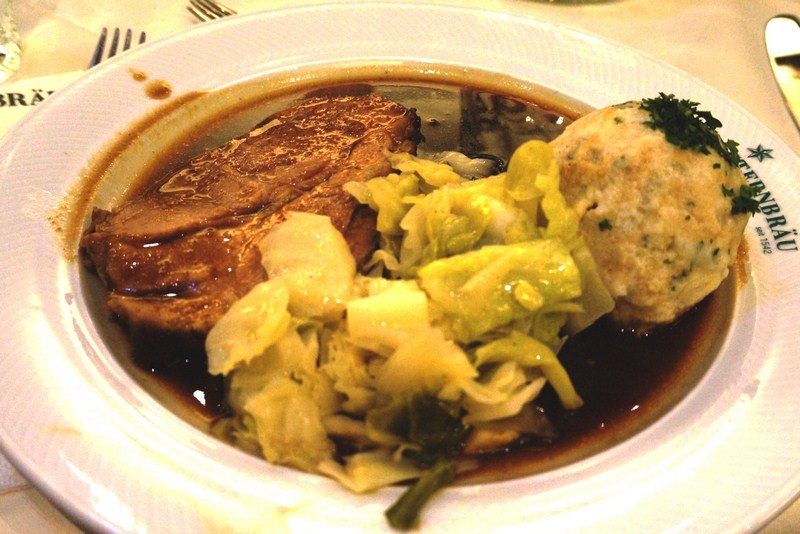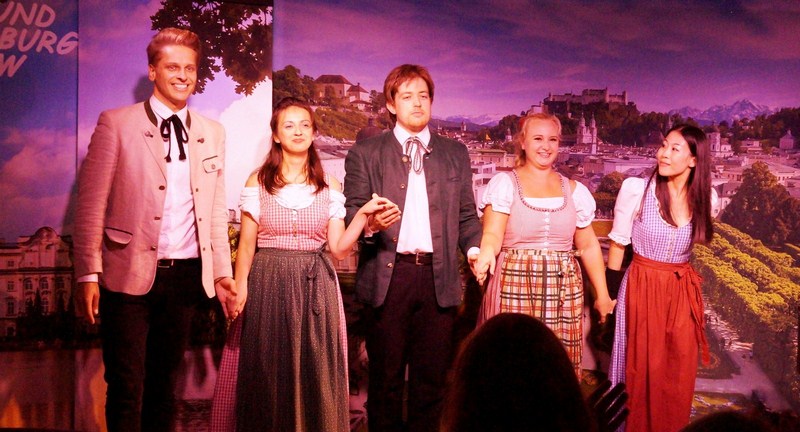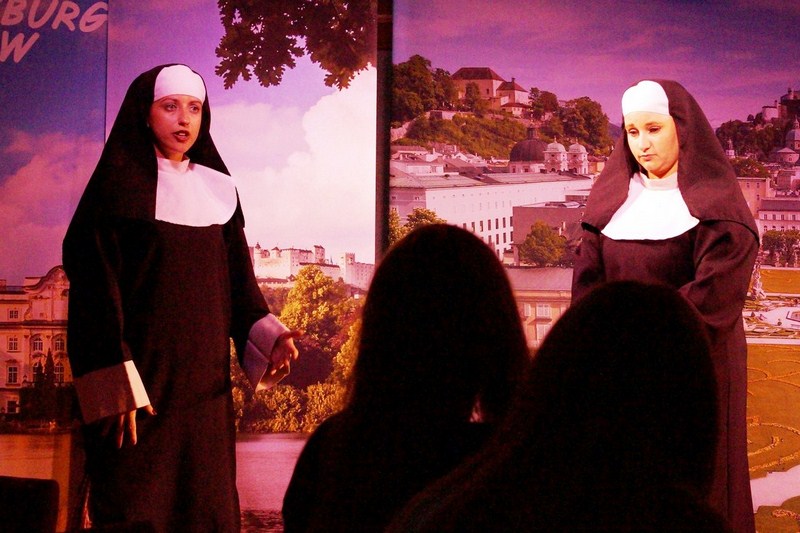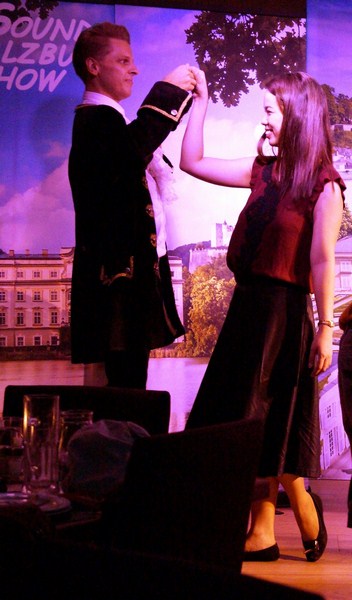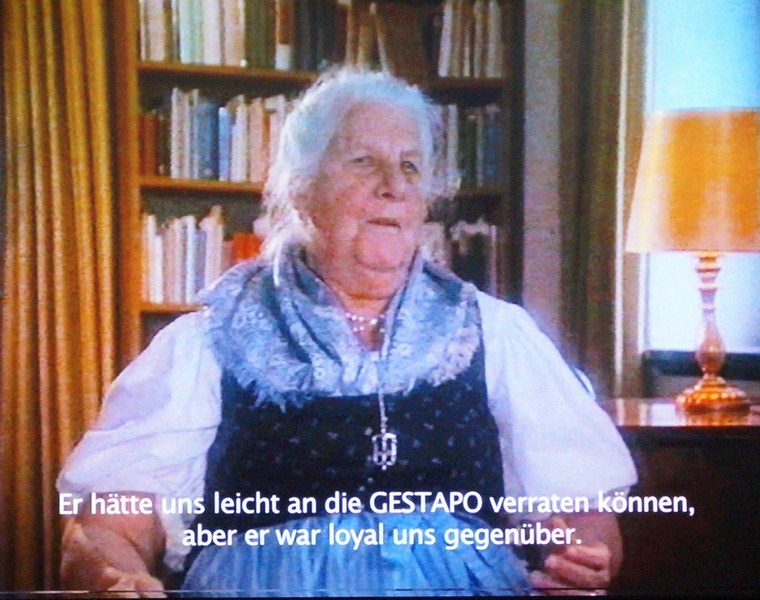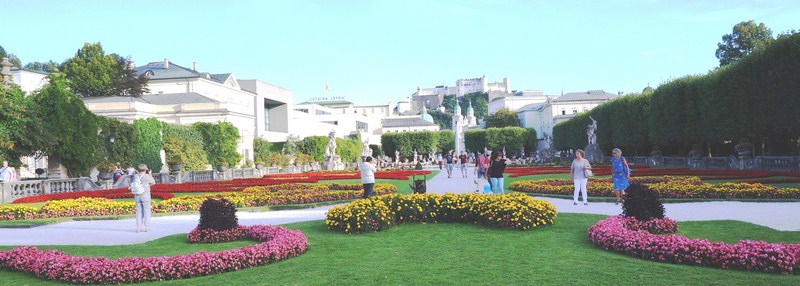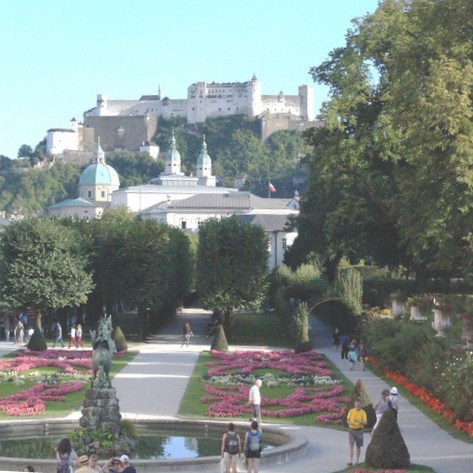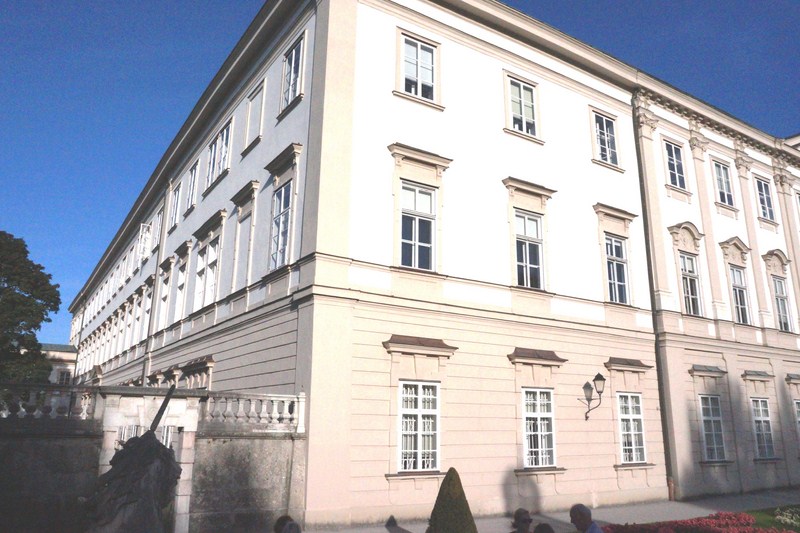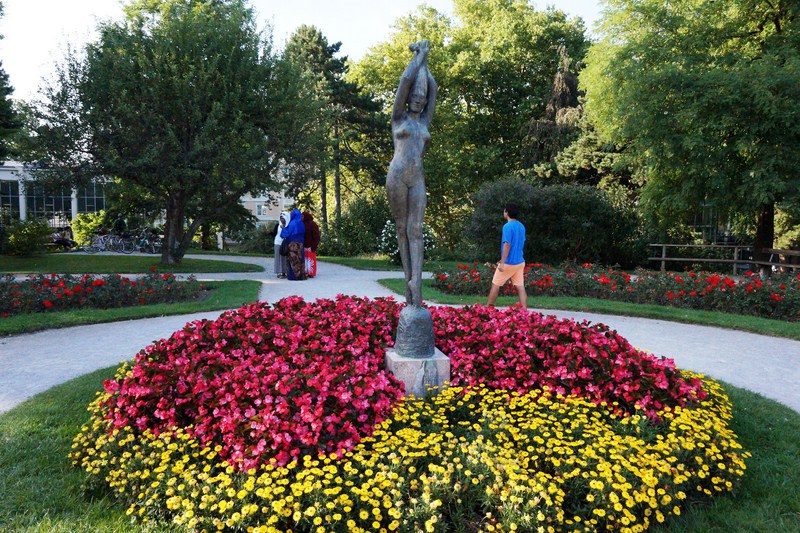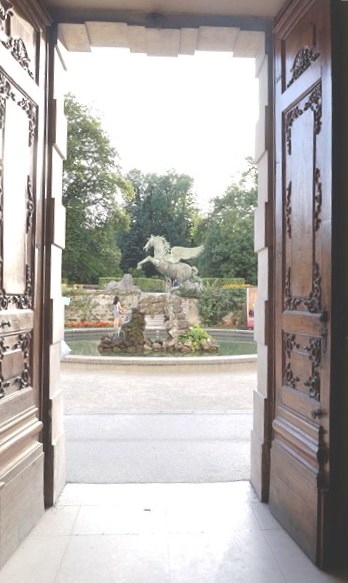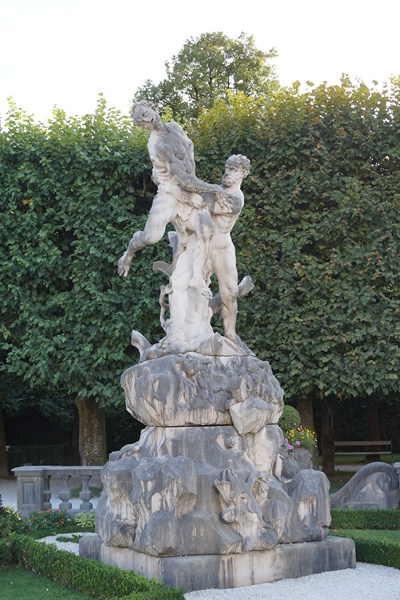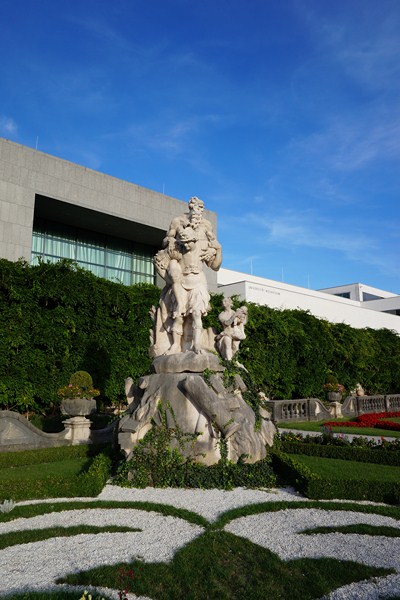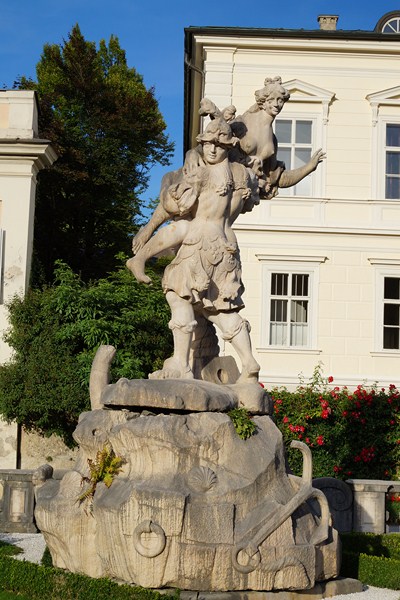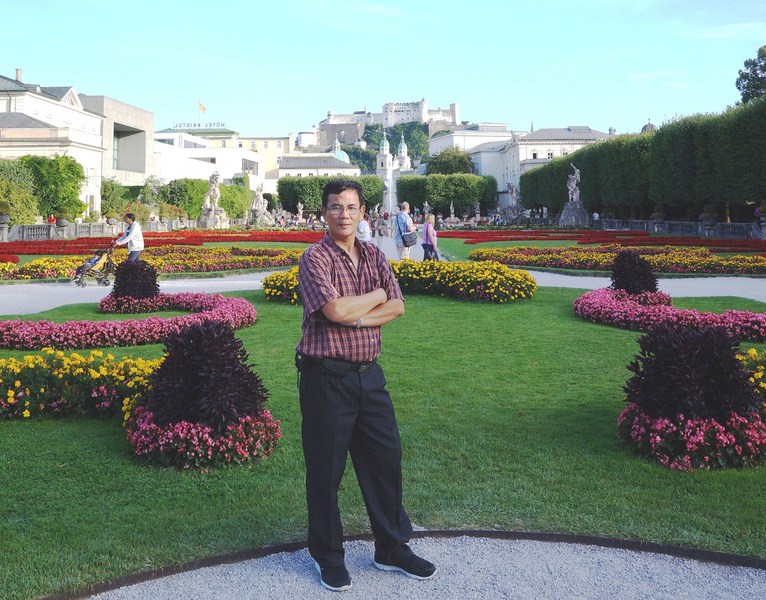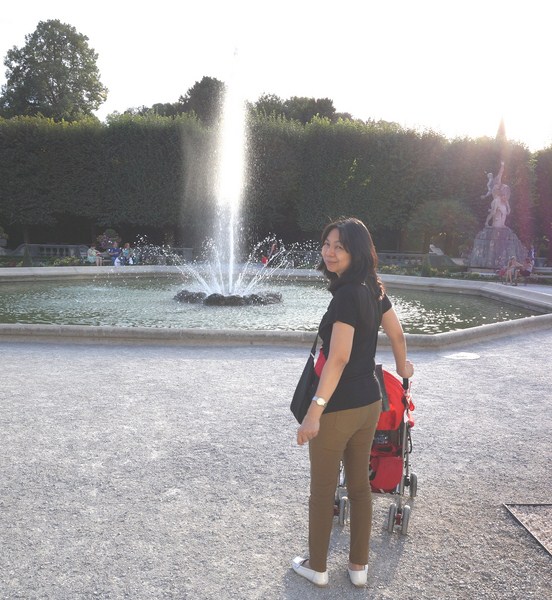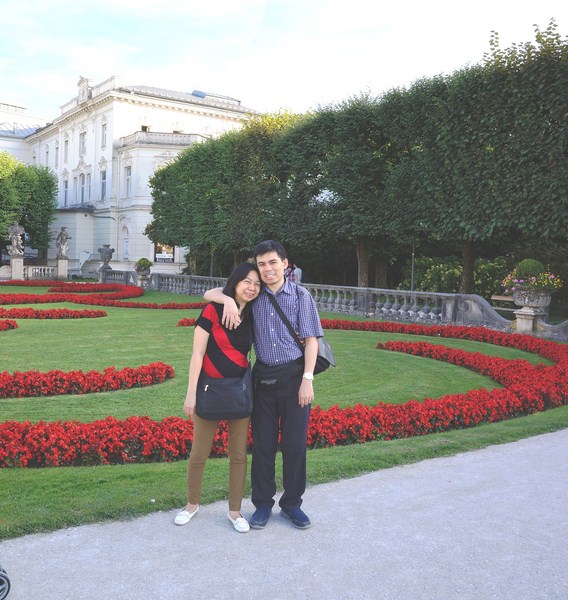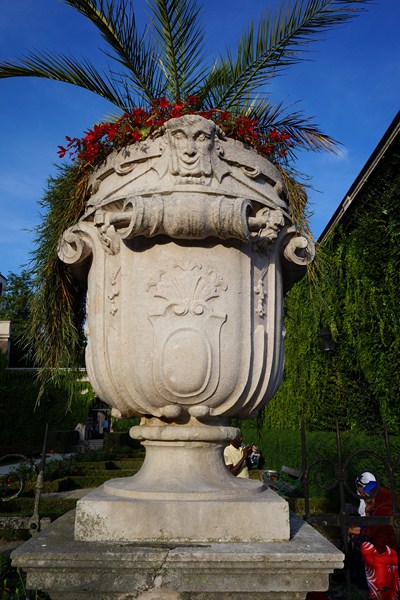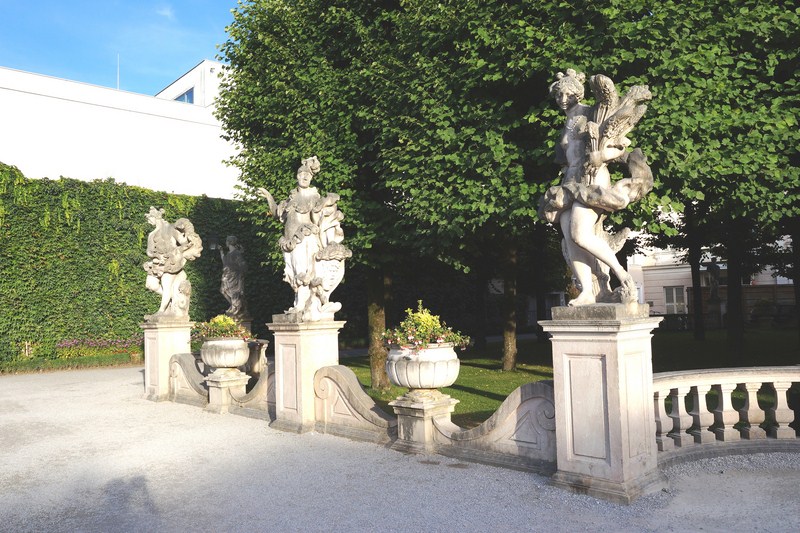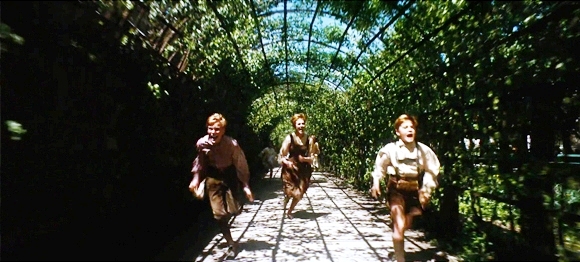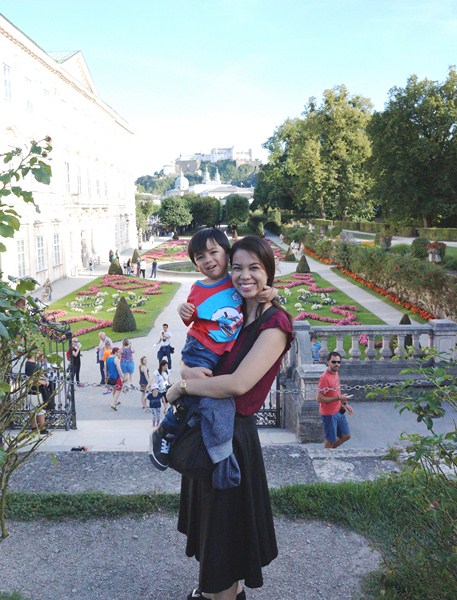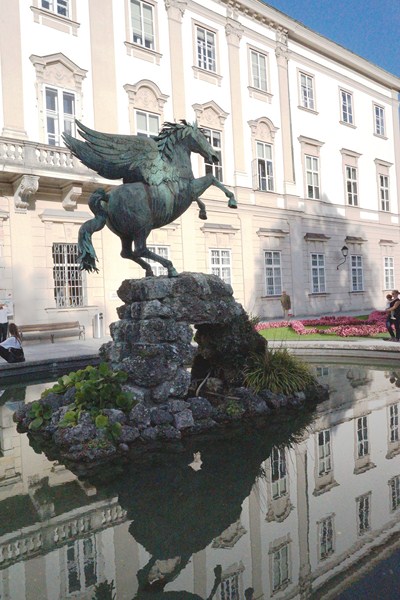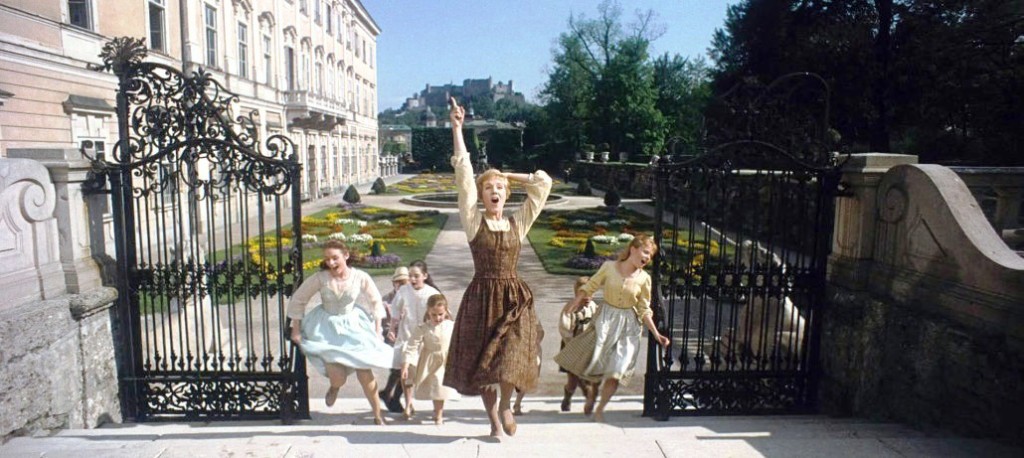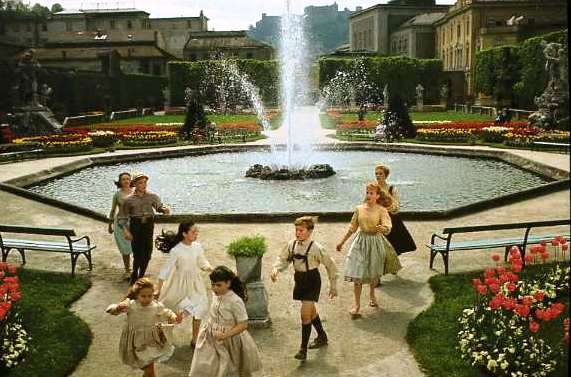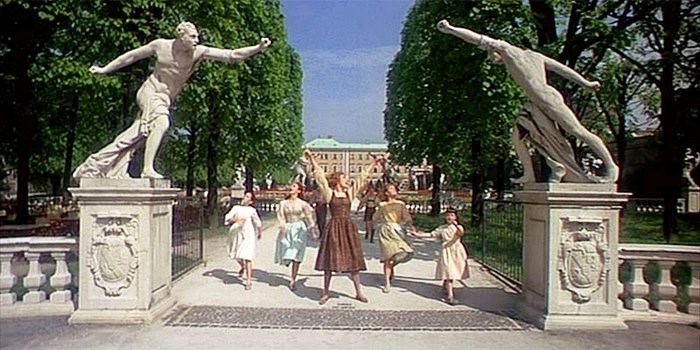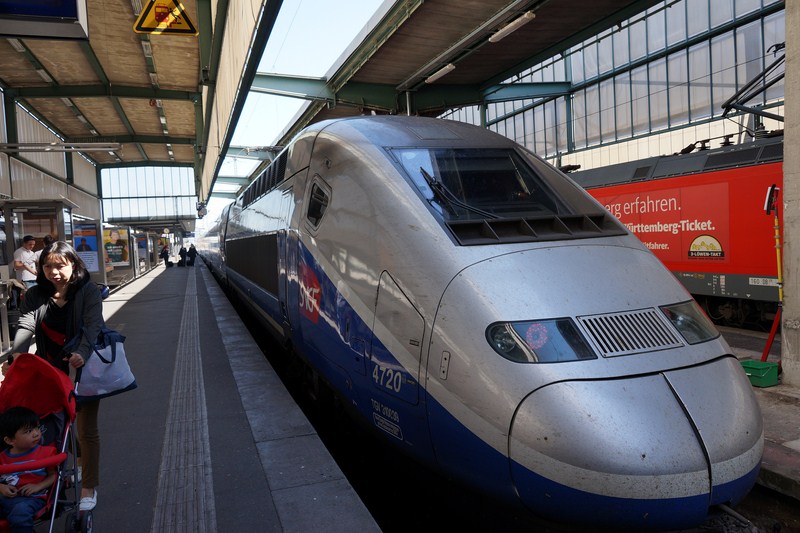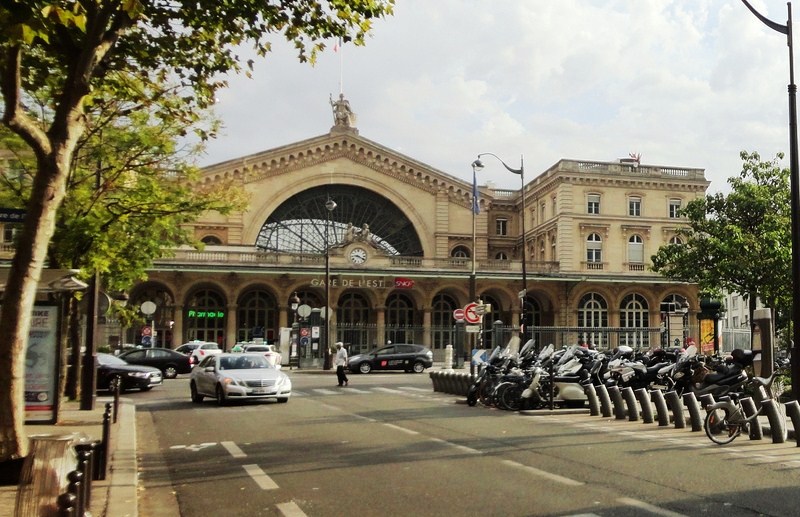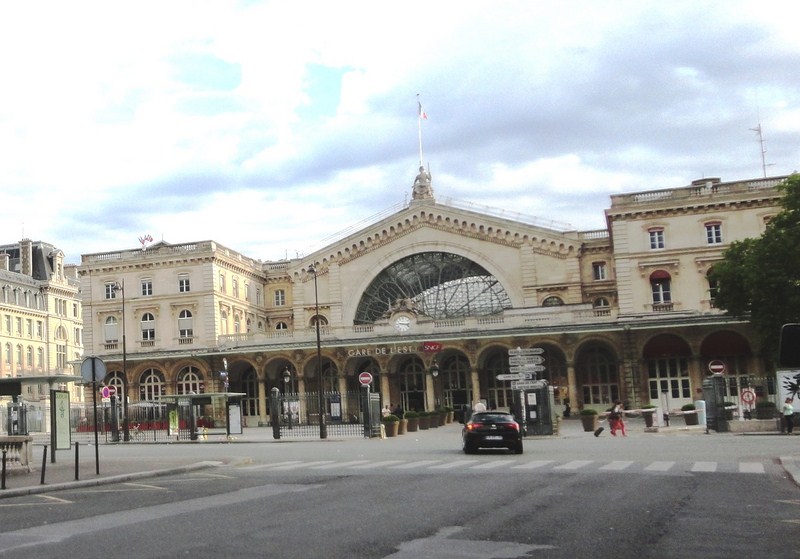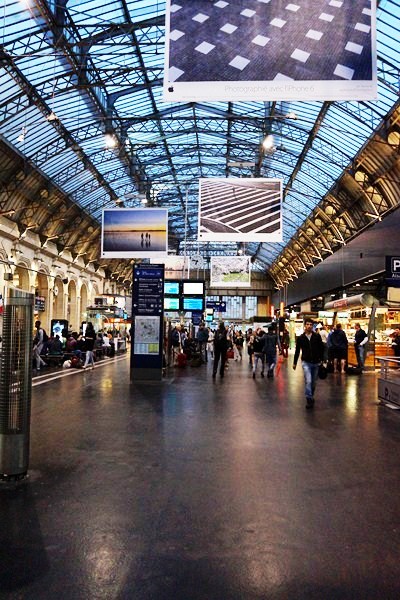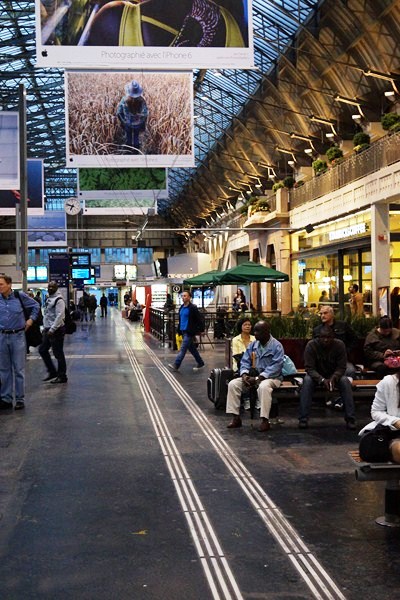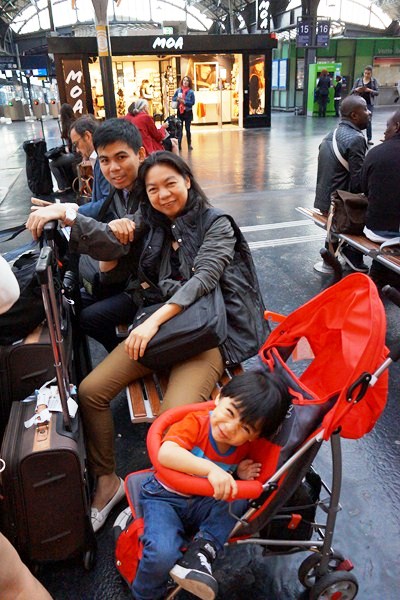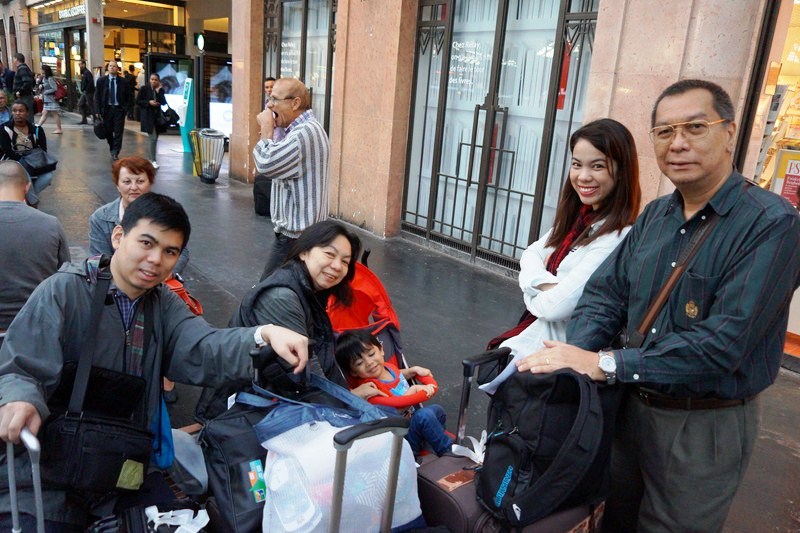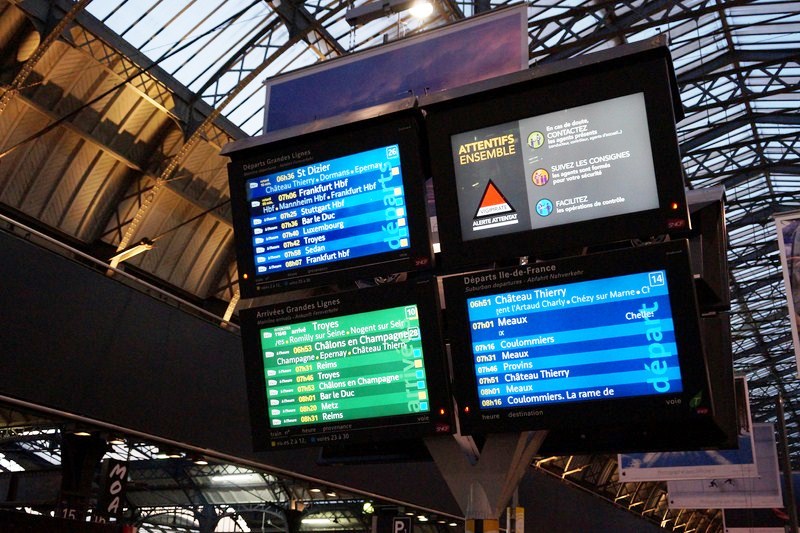The Makartsteg Bridge, the most modern bridge over the Salzach River in the Salzburg city center, is open for pedestrians and cyclists only. Connecting the new part of the city with the old town (Altstadt), it was named after the 19th century Historicist painter Hans Makart, who was born and raised in Salzburg. Providing artwork for many of the pompous buildings of the Ringstraße, Makart became famous as a painter of the Viennese Historicism.
The current bridge is is already the third Makartsteg, the first one built in 1905 in Art Nouveau (Jugendstil) and demolished in 1967. The second Makartsteg, famously known as the “swinging bridge” (if you stood still at the center, you could feel it move rather strongly), was crossed by some 20,000 pedestrians on an average day and soon was in bad shape, being demolished once again in 2000.
One year later, the current Makartsteg bridge was opened with a massive festival, with live music along the river banks during a warm June night, fireworks and some 25,000 people cheering at the most elegant Makartbridge the city had seen so far.
On the left side of the bridge is the “port” of the Amadeus tourist boat. Though there’s nothing special about the bridge itself, the panoramic view of the city, the cathedral, Hohensalzburg Fortress, the sunset and the boat traffic from this bridge is good.
However, this is not what the bridge is so famous for as the chain link fence of the bridge is covered in a sea of locks brought there by lovers from all around the world.
Hence, the name “Love Lock Bridge.” Following a popular, century-old tradition, these lovers inscribe their lock with their initials, affix the new love lock to the popular footbridge, snap photographs and then tossing the key into the river, an act symbolizing their unbreakable and eternal love.
This practice is viewed, by many, as a romantic gesture while others consider it a popular form of vandalism as many cities around the world are struggling with what some call litter and vandalism on their most cherished public walkways. In fact, the French did away with the one in Paris completely due to weight issues.
In May 2011, on the basis of a resolution of the City Hall (which declared them to be inconsistent with the regulations in force concerning “posters and similar things”), the first 42 love padlocks were removed. However, it was soon acknowledged that this was a misapprehension and, probably counting on greater profits from tourism , this tradition was allowed to continue.
Locks are purchased in a few of the stores just off of the. Prices reflect being in a highly tourist area. The locks are said to be removed every few years to make room for new ones. However, there is no mention about all of the keys laying on the bottom of the river.

